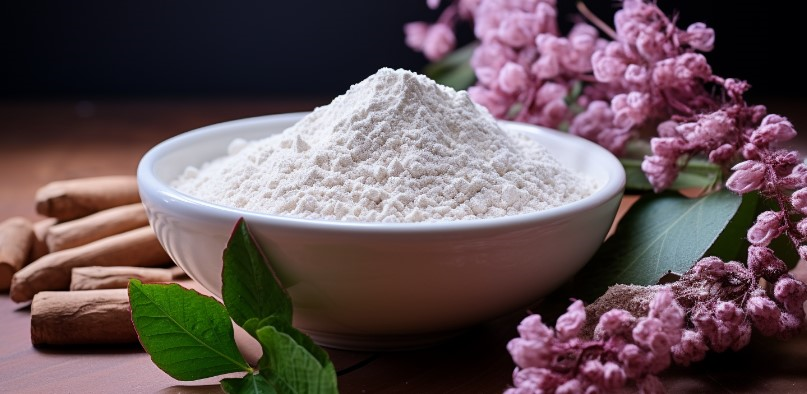レスベラトロールの不思議な効果

Resveratrol, a non-flavonoid polyphenol organic compound, is an antitoxin produced by many plants when stimulated.
何なのか? レスベラトロール?
Resveratrol was discovered as early as 1924 and was first isolated from the roots of Veratrum grandiflorum by the Japanese in 1940. In 1976, Res (resveratrol) was discovered in the leaves of grapes. It is an antitoxin secreted by plants in adversity or when encountering pathogenic damage. Its synthesis increases sharply when exposed to ultraviolet rays, mechanical damage and fungal infection. Therefore, Called phytoantibiotics (phytoalexin).Res has been found in more than 700 plants, including 72 species of plants in 31 genera and 12 families. Among them, grapes, knotweed, peanuts and other human foods contain higher levels of Res.
Resveratrol and its derivatives mainly exist in at least 72 species of plants belonging to 21 families and 31 genera including Vitis, Polygonum, Arachis, and Veratrum, including Polygonum cuspidatum, Cassia, Mulberry, etc. Common medicinal plants, as well as crops such as grapes and peanuts. The main sources of natural resveratrol are Polygonum cuspidatum and Vitis.
Polygonum cuspidatum belongs to the family Polygonaceae and is a perennial shrubby herbaceous plant. It is mainly distributed in the provinces south of the Yangtze River in my country and Hubei, Sichuan and other places. The roots and rhizomes of Polygonum cuspidatum are the main parts for extracting natural resveratrol. Natural resveratrol mainly exists in Polygonum cuspidatum plants in the form of polydatin. The content of resveratrol in plants is very small. It is produced through biological fermentation. method to obtain high levels of resveratrol. Among them, the resveratrol content in the fresh roots of Polygonum cuspidatum is higher than that in the fresh stems, and there is almost no resveratrol in the fresh leaves.
Grapes are deciduous vines of the Vitaceae family and are grown in various places north of the Yangtze River Basin in my country. The content of resveratrol in wild and artificially cultivated thorn grapes in Hunan, Guizhou and other places is relatively high. The content of resveratrol in grapes varies according to different varieties, and the content in different parts is also different. Resveratrol in grapes mainly exists in the vines, peels and seeds, with little or no resveratrol content in the pulp.
Resveratrol is a non-flavonoid polyphenol compound that is beneficial to human health. Resveratrol extracted from natural plants cannot meet people’s demand for it. Therefore, scientific researchers have been committed to developing fast and safe chemical compounds. , biosynthetic methods to obtain resveratrol
What are the effects of レスベラトロール?
Anti-Aging
In 2003, Harvard University professor David Sinclair and his team discovered that resveratrol can activate acetylase and increase the life span of yeast, which triggered an upsurge in anti-aging research on resveratrol. Howitz et al. found that resveratrol can serve as the strongest activator of silent information regulation 2 homolog1 (SIRT1), can simulate the anti-aging response of calorie restriction (CR), and participate in the regulation of the average life span of organisms. .
CR is a strong inducer of SIRT1 and can increase the expression of SIRT1 in organs and tissues such as the brain, heart, intestine, kidney, muscle and fat. CR can cause physiological changes that delay aging and extend lifespan, the most significant of which can be extended by 50%. Studies have confirmed that resveratrol can extend the life span of yeast, nematodes, fruit flies and lower fish.
anti-tumor, anti-cancer
Resveratrol has significant inhibitory effects on various tumor cells such as mouse hepatocellular carcinoma, breast cancer, colon cancer, gastric cancer, and leukemia. Some scholars have confirmed that resveratrol has a significant inhibitory effect on melanoma cells through MTT method and flow cytometry.
There are reports that resveratrol can enhance cancer radiotherapy, exert a “1+1>2” effect, and effectively inhibit the effect of cancer stem cells. But so far, due to the complexity of resveratrol’s anti-tumor mechanism, researchers have not yet reached a consensus on its mechanism of action.
Prevent cardiovascular disease
Epidemiological studies have found that the French paradox is a phenomenon in which French people consume a large amount of fat on a daily basis, but the incidence and mortality of cardiovascular diseases are significantly lower than in other European countries. This phenomenon may be related to their daily consumption of large amounts of wine. Resveratrol may be its main active protective factor. Research shows that resveratrol can regulate blood cholesterol levels by binding to estrogen receptors in the human body, inhibit platelets from forming blood clots and adhesion to the blood vessel walls, thereby inhibiting and reducing the occurrence and development of cardiovascular disease, and reducing the risk of heart disease in the human body. Risk of vascular disease.
レスベラトロール also has antibacterial, antioxidant, immunomodulatory, anti-asthmatic, beneficial bone health and other biological activities. Resveratrol is highly sought after due to its various biological activities.
With the development of health care products in the direction of naturalness, safety, and science, consumers are demanding natural and safe products, and natural plant extract ingredients have been widely used. Resveratrol is an active monomer isolated from natural plants. It has remarkable effects and has always been a popular research direction. How to take these auxiliary products reasonably is the top priority, so you still need to ask your doctor for advice when supplementing these. It doesn’t mean that the content is high, but the most important thing is suitability.
